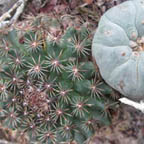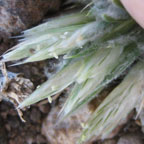There is more to life than plants.
Geococcyx californianus, the greater roadrunner, leaving the Sul Ross cactus garden.
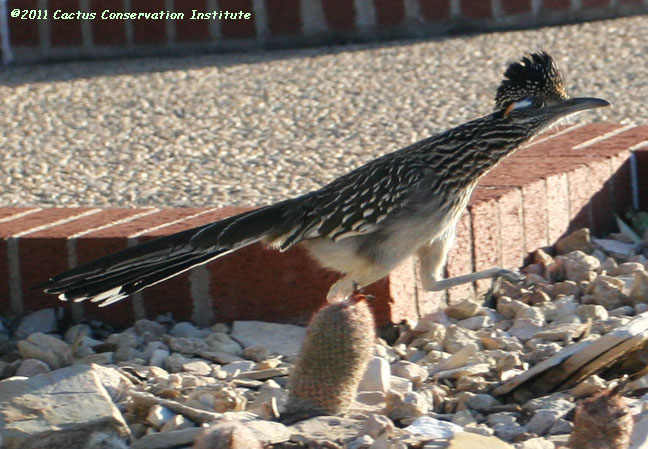
Phrynosoma cornutum, the famous "Texas horned lizard", in Jim Hogg County, Texas.
 |
 |
Crotalus atrox, the "western diamondback rattlesnake"; a resident of the Lophophora regrowth study site in Jim Hogg County, Texas.
This individual was around 7 feet long and 3 inches at maximum diameter, not an unusually large size for this species in South Texas.
 |
 |
 |
 |
A couple of Xerobates (Gopherus) berlandieri, the "Texas tortoise"; encountered in Starr County, Texas.
 |
 |
 |
 |
 |
 |
Grasshopper with Lophophora williamsii population in Jim Hogg County, Texas.
 |
 |
Grasshopper with Lophophora williamsii var. echinata population in West Texas.
 |
Grasshopper with Lophophora williamsii var. echinata population in Val Verde Co.
(image on left was shaded; on right was in full sun)
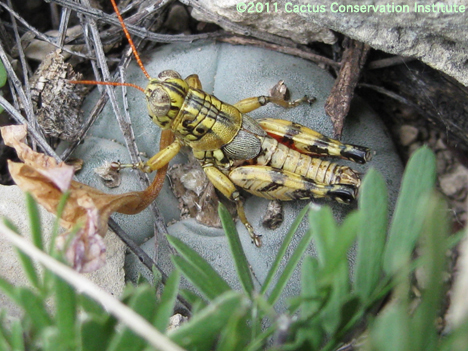 |  |
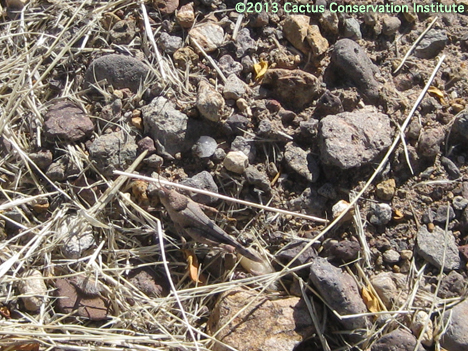 |
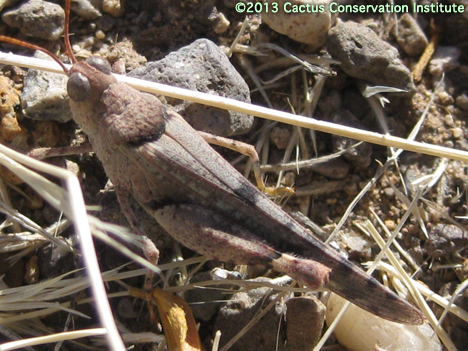 |
In Brewster County, north of Mule Ears in BBNP
 |
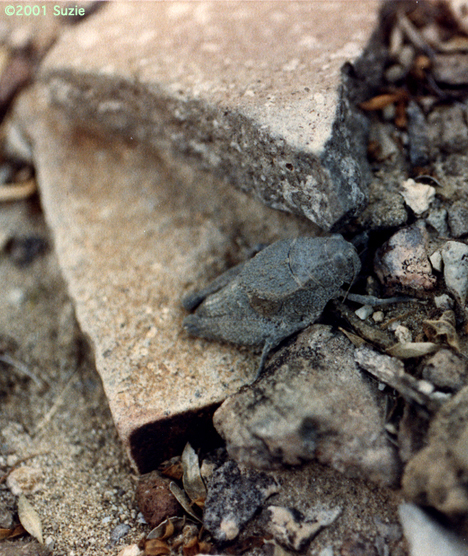 |
Thrips in Presidio County
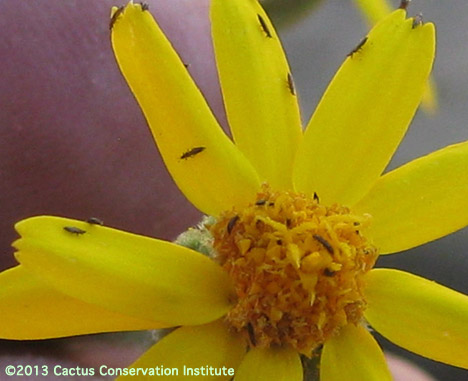
Spider above a Lophophora williamsii population in Jim Hogg County, Texas.
 |
Amblyoma cajennense, the "cayenne tick", from the study site in Jim Hogg County Texas
Nymphs found in 2011
Increments on the scale bars below 1 = 0.05 mm.
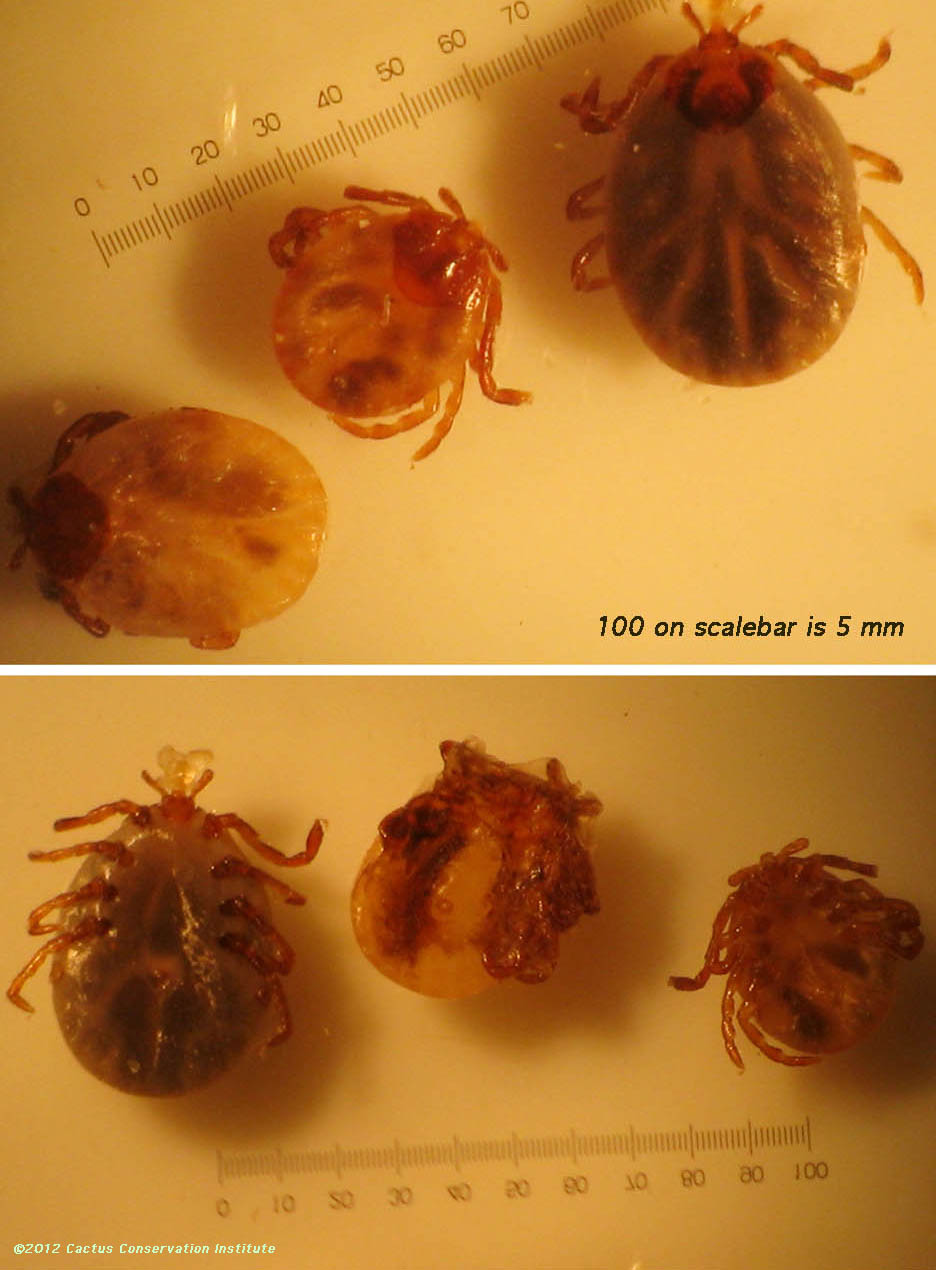
 |
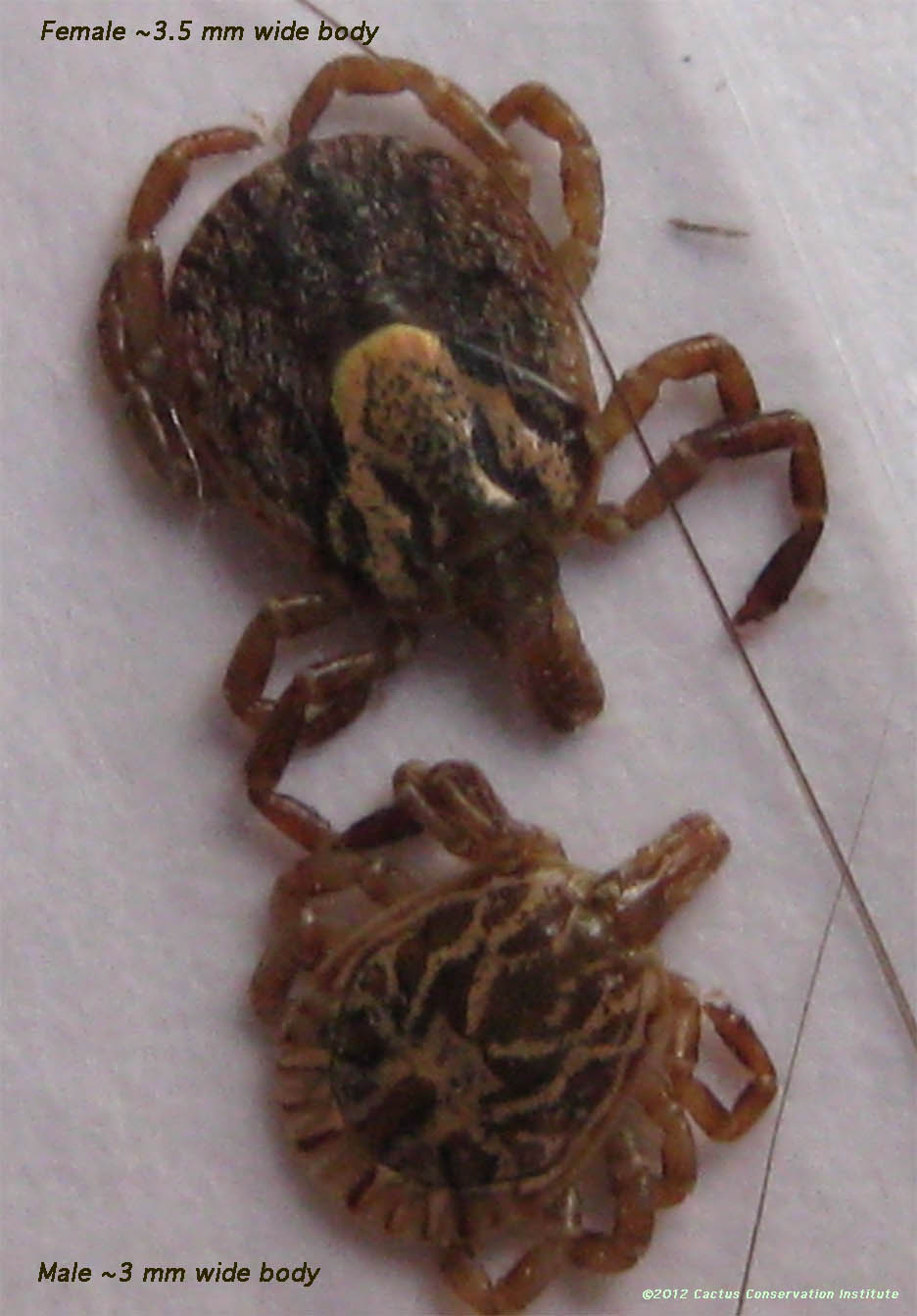 |
We also encountered several dead animals that seemed to be worth sharing
Taxidea taxus, the "American badger", from Starr County, Texas.
 |
 |
Odocoileus virginianus, the "white-tail deer", from Starr County, Texas compared to Axis (Cervus) axis, the imported "Axis deer".
 |
Contents ©
All images are © copyrighted by the photographers and/or the CCI and are used with permission.
Reproduction is forbidden without prior written consent
Cactus
Conservation
Institute
|
|
|
|
|
|
|
|
|
|
|
|

